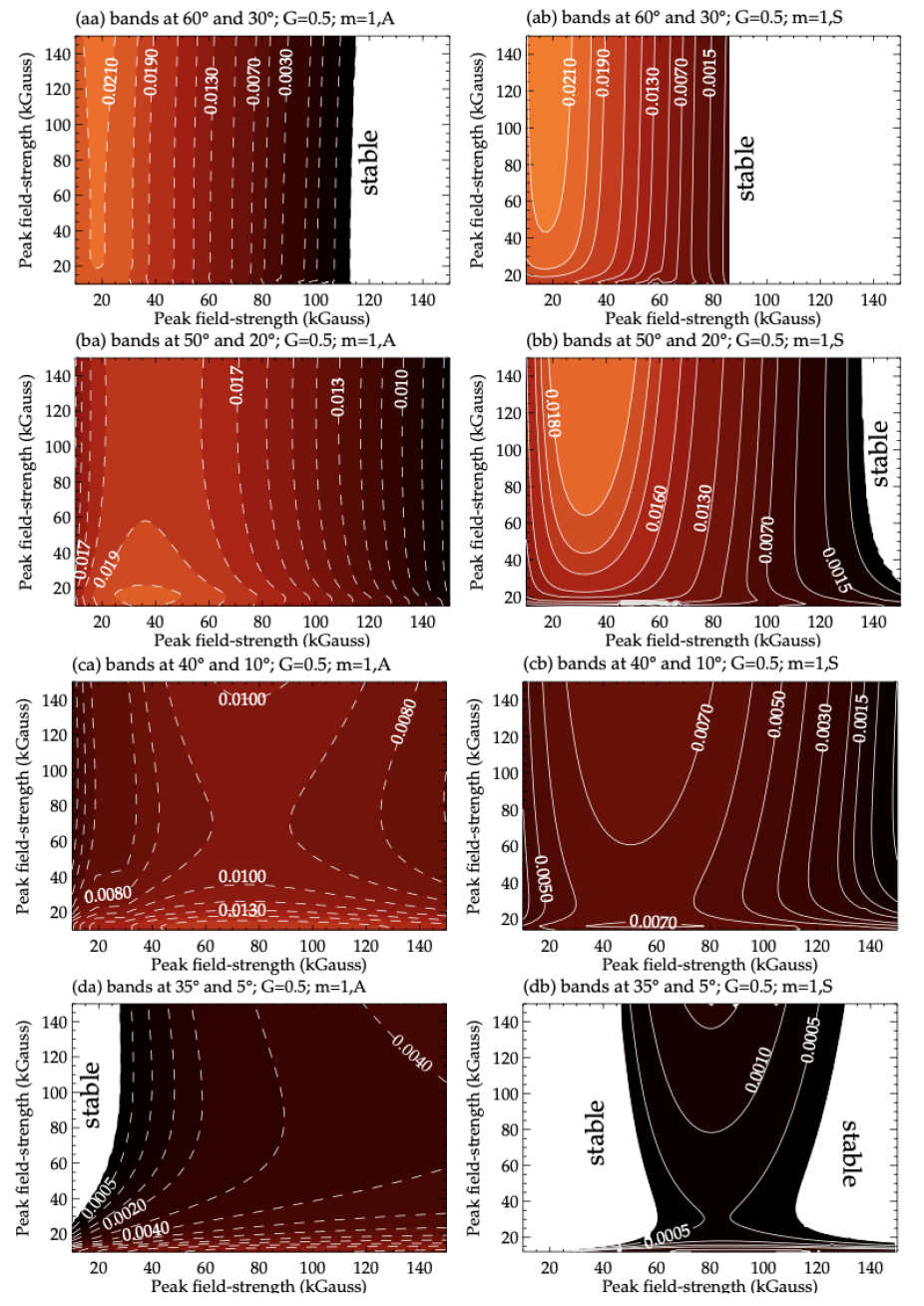
For low effectiive gravity (G = 0.5) growth rate contours for m = 1 modes are displayed in the field-strength space, in which x-axis denotes the strength of the high-latitude band and the y-axis that of the low-latitude band. Left and right panels are respectively for antisymmetric (m = 1,A) and symmetric (m = 1,S) modes. As the band-system migrates from high latitudes towards the equator, four rows from top to the bottom show how the instability features change respectively for bands at 60◦ − 30◦ (aa,ab), 50◦ − 20◦ (ba,bb), 40◦ − 10◦ (ca,cb) and 35◦ − 5◦.
Astrophysical Journal: Along with the ”butterfly diagram” of sunspots, combined observational studies of ephemeral active regions, X-ray and EUV brightpoints, plage, filaments, faculae and prominences demonstrate a pattern, which is known as the Extended Solar Cycle (ESC). This pattern indicates the wings of the sunspot butterfly could be extended to much higher latitudes (up to ∼ 60 degrees), to earlier time than the start of a sunspot cycle, hence yielding a strong overlap between cycles. Thus during the ongoing cycle’s activity near 30-degrees latitude in each hemisphere, the next cycle kicks off at around 60- degrees. By representing these epochs of overlaps by oppositely-directed double magnetic bands in each hemisphere, we compute the unstable eigenmodes for MHD Rossby waves at the base of the convection zone and study how the properties of these energetically active Rossby waves change as these band-pairs migrate equatorward. We find that in each hemisphere the low-latitude band interacts with the high-latitude band and drive the MHD instability as the solar activity progresses from 35◦ to 15◦ latitude, which is essentially the rising phase. When the activity proceeds further equatorward from 15-degrees, interaction between low- and high-latitude bands weakens, and the cross-equatorial interaction between two low-latitude bands in each hemisphere starts. The eigenmodes in latitude- longitude planforms also reflect such changes in their pattern as the bend of the the active cycle moves below 15-degree latitude.